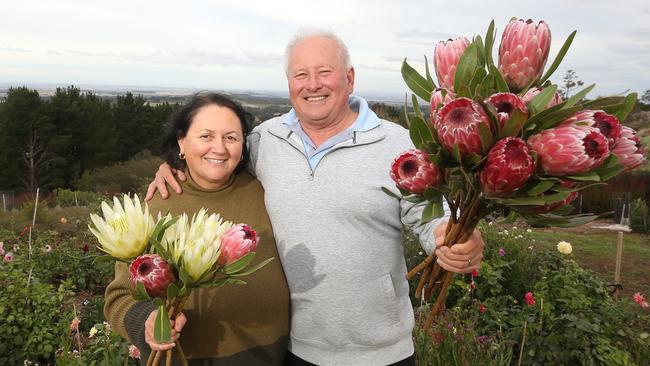Forgotten flowers: Industry calls for inclusion in biosecurity levy
Australian flower growers say their industry must not be forgotten in the federal government’s new biosecurity levy.
Imported cut flowers and foliage should be included in the new federal biosecurity levy, announced in Tuesday’s budget.
That’s the call from the industry’s peak body, Flower Industry Australia, which claims the flower industry deals with “significant biosecurity risks” from imported blooms every year.
It comes after a recent call to review the decision to exclude cut flowers and foliage from country-of-origin labelling left the industry feeling ignored by government.
FIA chief executive Anna Jabour said flower importers did not pay into a specific biosecurity levy in Australia, “despite the fact that cut flowers and foliage are the highest risk pest pathway”.
“A biosecurity levy for cut flower and foliage imports would ensure that importers contribute to the cost of protecting the Australian agricultural industry and environment,” Ms Jabour said.
The peak body for flower growers recently initiated its own origin labelling system, at a cost to growers.
Green and gold rubber bands touting an ‘Australian Grown’ label are available for flower growers via Flower Industry Australia.
FIA chief executive Anna Jabour said the rubber bands were an “interim solution” as the industry continued to advocate for flowers to be added to the mandatory country of origin labelling scheme.
“It enables Australian people, florists and wholesale markets to easily identify Australian flowers,” Ms Jabour said.
“Almost every grower and florist uses rubber bands on their flowers.”
Ms Jabour said the bands were a stopgap measure, with the aim to demonstrate to the government “that there are some common sense solutions” available.
Agriculture Minister Murray Watt’s office directed queries to the Department of Agriculture, which in turn directed questions to the trade department. The Weekly Times is awaiting a response.
A submission made by FIA in February called on the federal government to review the decision to exclude cut flowers and foliage from the labelling scheme, citing a cost-benefit analysis that found “everyone $1 of costs incurred generated $3.30 in benefits”.

The submission also stated the industry had been “decimated” by the growth in imported flowers in recent years, referencing an IBISWorld report that showed annual Australian flower revenue had dropped 41 per cent between 2007 and 2022, from $448 million to $265 million.

Mount Gisborne flower grower Anna Sfyris has ordered the Australian grown bands for use at her flower farm, 302 Flowers.
She said it was important to support locally-grown blooms, for both the industry and the country.
“The bands are a good idea, they’re biodegradable, it fits with our minimal waste philosophy, and it also increases awareness with the consumer about where their flowers are coming from, and the health of the plant,” Ms Sfyris said.
She said consumers were increasingly asking questions about the provenance of their flowers.
“And florists themselves … I have a florist who sources from local farms. It’s about making informed choices.”
Shadow agriculture minister David Littleproud said labelling of flowers would give consumers “an assurance that they are buying an Australian product”.
“From a financial perspective it provides a better line of sight for consumers, so they can make the choice of supporting Australian farmers when they go to buy flowers. Consumers have a right to know where the product they are buying originates from,” Mr Littleproud said.





